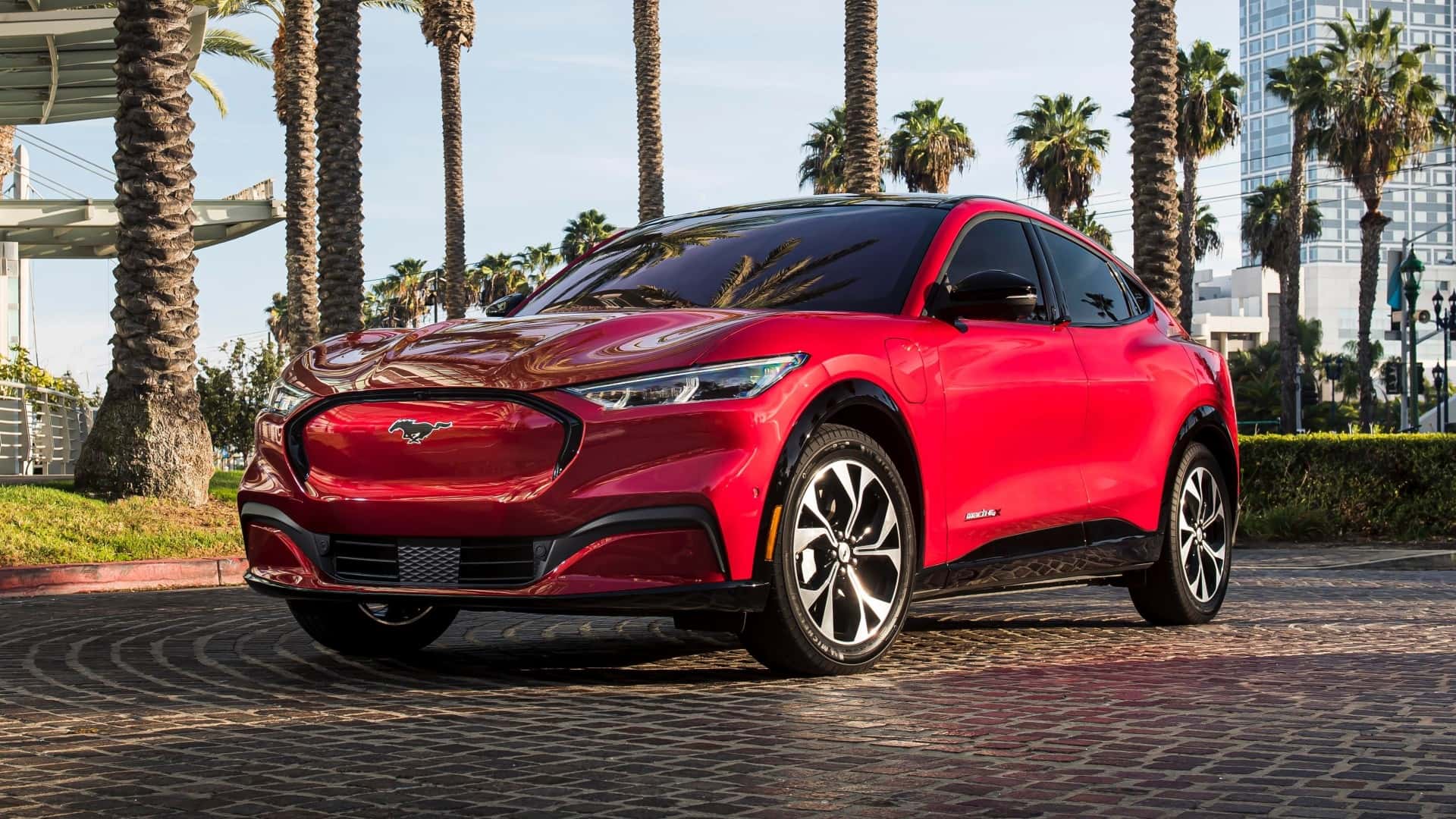
You’d better act fast if you want a good deal on a new EV. The up-to-$7,500 tax credit that incentivizes plug-in car purchases is changing again in 2024, and some of your favorite models may be on the chopping block—including Ford’s electric pony car.
Ford spokesperson Marty Günsberg told InsideEVs on Wednesday that it “seems unlikely” that the Mustang Mach-E SUV, which currently qualifies for a $3,750 credit, will remain eligible for credits next year. Bloomberg reported on Friday that Ford expected the Mach-E to lose eligibility.
Why the shakeup? The EV tax credit, passed as part of 2022’s Inflation Reduction Act, has restrictions baked into it that were designed to get stricter over time, to both boost domestic manufacturing and reduce US reliance on China for the building blocks of EVs. Starting in 2024, a higher percentage of a vehicle’s battery components and battery minerals will need to be sourced from the US or one of its closest trading partners to qualify for credits than before.
The credit is split into two halves, which is why you’ll see that some models qualify for more money back than others. Meeting domestic sourcing requirements for battery components earns a vehicle $3,750; meeting the requirements for battery minerals, like nickel and cobalt, unlocks the other $3,750. (The Mach-E currently qualifies for the second part, Günsberg said.) Vehicles also can’t be imported from outside North America.
Also taking effect in 2024 is a new rule prohibiting Chinese battery components in qualifying EVs. The Treasury Department released long-awaited guidance on what exactly that means on Friday, giving automakers some clarity as to what their supply chains will need to look like going forward. Günsberg said Ford is still working to understand what that guidance will mean for the automaker. He declined to clarify which of the eligibility requirements the Mach-E is likely to fall out of compliance with come January 1.
It’s worth noting that many EVs, including the Mach-E, have seen serious discounts from dealers and manufacturers alike. In theory, a buyer could find one so discounted that it makes up the difference from the lost tax credit. But even with the discounts, it’s likely we’ll see Mach-E prices go up next year on the whole.
The wider implications of the tightening regulations are still hazy, with many automakers telling InsideEVs they’re still reviewing things and can’t concretely say how their situation will change in January, if at all.
“We are reviewing the new Treasury guidance now,” a General Motors spokesperson told InsideEVs. “Due to GM’s historic investments in the U.S. and efforts to build more secure and resilient supply chains, we believe GM is well positioned to maintain the consumer purchase incentive for many of our EVs in 2024 and beyond.” Several GM vehicles are currently eligible for tax credits, including the Cadillac Lyriq and Chevrolet Bolt EUV.
A Volkswagen spokesperson said the company is “cautiously optimistic that the Chattanooga-assembled 2024 Model Year ID.4 will qualify for the full $7,500 Tax Credit,” referring to the brand’s electric SUV.
Tesla, by far the dominant seller of EVs in the US, recently posted a bulletin to its website informing customers that two variants of its Model 3 sedan—the Long Range and Rear-Wheel Drive versions—will see their credits slashed in half on January 1.
On the one hand, fewer eligible models could put the chill on EV sales right at a time when car companies are trying to reach mainstream customers rather than obsessive early adopters. On the flip side, the tax credit is also getting easier to claim in 2024. Starting next year, shoppers will be able to apply a credit upfront, when they buy a vehicle, instead of waiting for a tax-time refund like they had to before.

